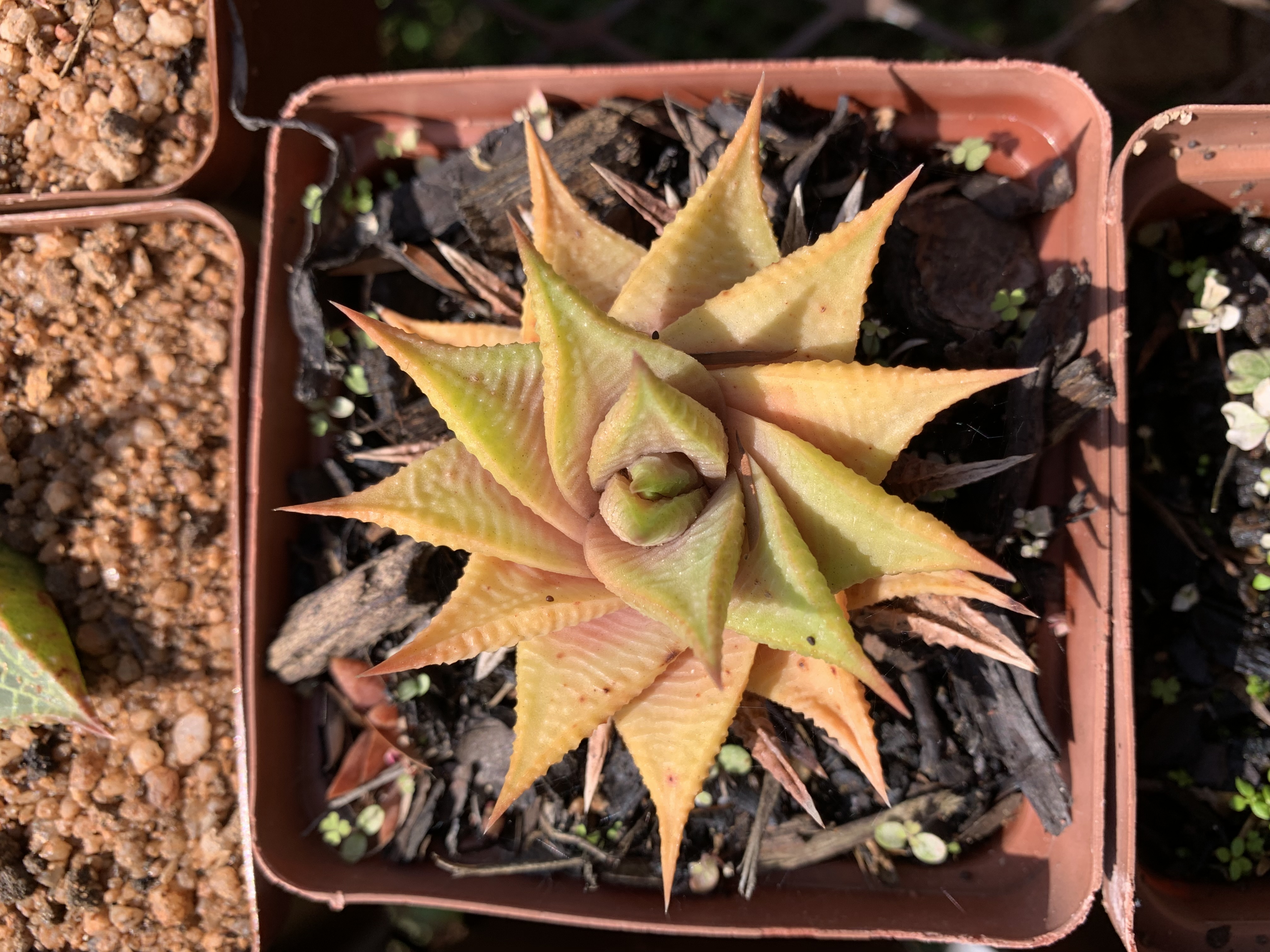
Haworthiopsis limifolia sp.
R60.00
Out of stock
Formerly: Haworthia limifolia
Family: Asphodelaceae
Haworthiopsis limifolia ‘Grey’ is a distinctive succulent cultivar appreciated for its textured, ridged leaves with a soft grey-green coloration. This variety is a form of Haworthiopsis limifolia, native to South Africa, and is notable for its striking foliage and slow, clumping growth habit.
Origin and Habitat
Haworthiopsis limifolia is native to the KwaZulu-Natal and Eastern Cape regions of South Africa, where it grows on rocky slopes and well-drained soils. It typically inhabits areas with partial shade from shrubs or rocks, which protect it from intense midday sun. The climate is generally warm with moderate rainfall.
Plant Description
This succulent forms tight rosettes of thick, lance-shaped leaves that are covered with prominent longitudinal ridges or striations, giving the leaf surface a rough, textured appearance. The ‘Grey’ form has a muted grey-green leaf color that enhances its sculptural look.
Leaves are arranged in a spiral and taper to blunt points. The plant grows slowly and eventually forms clusters by producing offsets from the base.
Flowering occurs in spring or summer, producing slender stalks with small, tubular, white to pale green flowers.
Care Instructions
Light
Prefers bright, indirect light or partial shade. It tolerates some direct morning or late afternoon sun but should be shielded from harsh midday sun, especially in hot climates.
Watering
Water thoroughly but only when the soil has completely dried out. During the growing season (spring to autumn), water approximately every 2–3 weeks depending on conditions. Reduce watering in winter to prevent rot.
Soil
Requires well-draining soil, such as:
2 parts succulent or cactus potting soil
1 part pumice or coarse sand
1 part perlite or grit
Good drainage is essential.
Temperature
Thrives in temperatures between 18°C and 27°C. Protect from frost and avoid temperatures below 5°C.
Additional Information
‘Grey’ is valued for its architectural form and unique texture, making it a favorite in succulent collections and rock gardens. It offsets slowly but steadily, allowing for easy propagation by division. This species is generally pest-resistant but should be monitored for mealybugs.
Plants
Explore our rare cycads, clivias, and succulents.
Shop
Garden
© 2025. All rights reserved.
(WhatsApp)
